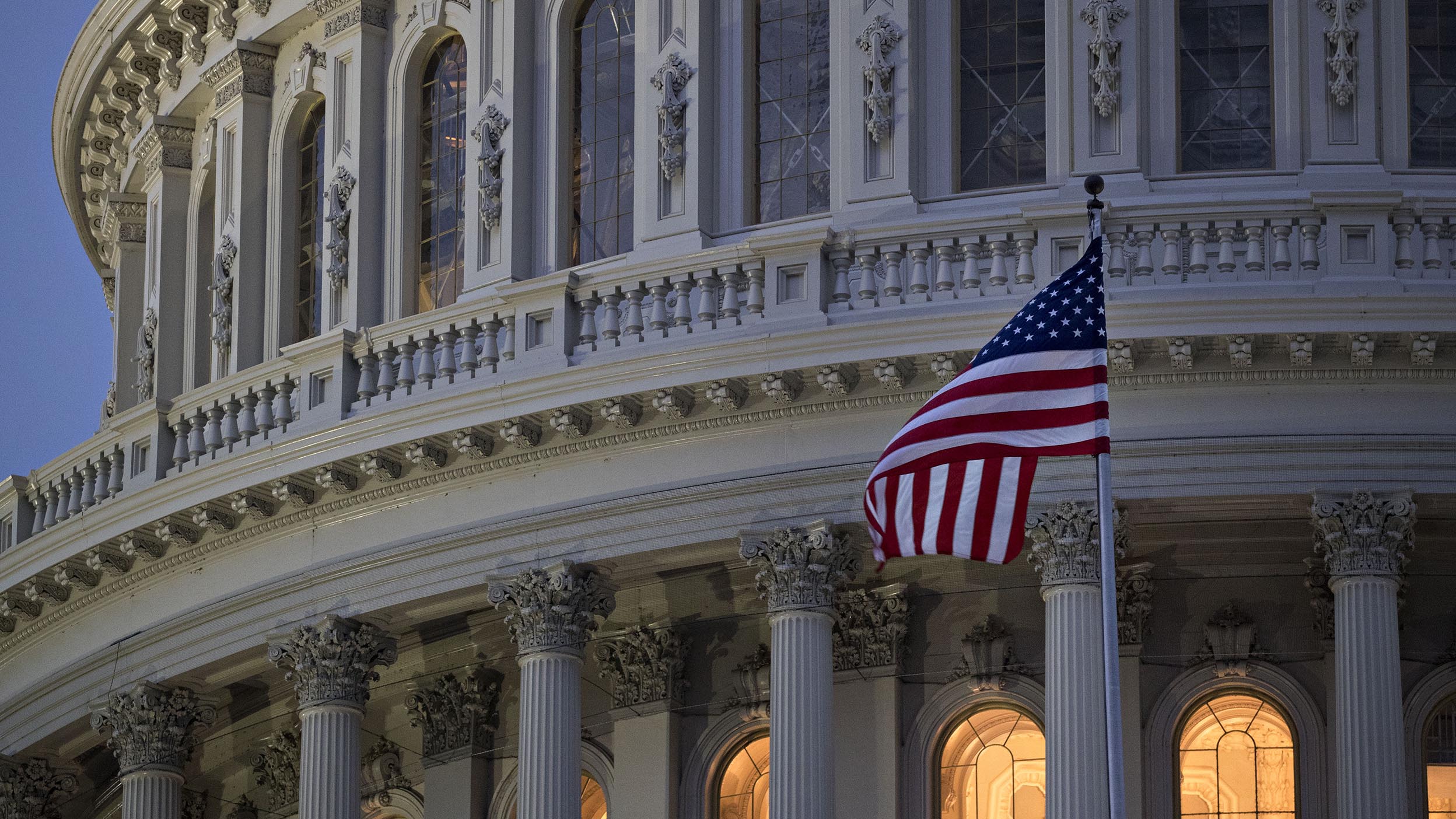
Markets and Economy Above the Noise: Policy uncertainty persists
The challenges of the current investment environment are well documented, so maybe it’s more interesting to talk about what could go right.

The Fed may have waited too long to raise interest rates reducing the chances of a soft landing.
Monday's sell-off in the US and overseas triggered talk of market corrections and a possible recession.
Data suggests that any coming recession could be mild, and a rate cut in September could calm things down.
The Federal Reserve (Fed) held steady on interest rates at its last meeting. While a long-awaited rate cut wasn’t widely expected until September, we saw a rise in unemployment just two days later, raising concerns that the Fed may have waited too long to cut rates. US markets awoke Monday morning to an overseas sell-off that spread to the US. Talk has turned to market corrections and a possible recession.
Alessio de Longis, Head of Investments for the Invesco’s Solutions team, joined the Greater Possibilities podcast to look at the developing situation. A bump in unemployment shouldn’t be a huge concern in and of itself. But mitigating factors provide some context.
According to Alessio, “There is the famous Sahm Rule … the idea is that when the unemployment rate rises by more than 50 basis points over a short period of time, it typically doesn't come back very quickly, and that deterioration trend tends to then coincide with a recession. That's really what has changed.”
Alessio emphasized that not all recessions are created equally. “Are we seeing the rising probability of a recession when you look at all of the indicators? I think the answer is yes. However, the evidence in the data is also that this could be one of the many mild recessions that we've seen plenty of times. We don't have those large imbalances in the economy that turns this into another Global Financial Crisis or a scary situation such as COVID.”
If the Fed delivers rate cuts in September — rate cuts that the market has already priced in — then that should calm things down. But, at least today, September seems like a long time from now.
Visit Portfolio Playbook for investment insight in times of market volatility.
Explore 10 things investors should know about market corrections.
The Fed, the job market, and the rising risk of recession
Concerns that the Federal Reserve has waited too long to cut interest rates, along with a worse-than-expected unemployment report, sparked fears of a US recession and contributed to a global market sell-off. Alessio de Longis revisits the podcast to discuss this developing situation. (Invesco Distributors, Inc.)
Brian Levitt:
Welcome to the Greater Possibilities Podcast, where we put the concerns into context and the opportunities into focus. I am Brian Levitt. We are having an emergency conversation today after a bit of volatility in markets heading into the weekend and early this week. With us again, our friend Alessio de Longis, who is head of investments for Invesco Solutions. He's here to provide more commentary as we go through this journey together. Alessio, thank you for joining.
Alessio de Longis:
Thank you for having me, Brian.
Brian Levitt:
We posted a podcast of us having a conversation not that long ago, and in hindsight you seem pretty prophetic in that you were talking about weaker growth and concerns about markets in the short term, so I suppose I should say kudos. What's happened in the last few days in markets certainly is some validation of what you were seeing.
Alessio de Longis:
It certainly feels that way. I think we discussed at length the last time all the various indicators that were suggesting growth was slowing, and there was one data point missing, right, Brian? It was the resilience in employment, the resilience in the unemployment rate. What has changed? What has changed since we last spoke? I think the last payroll report put a few concerns into perspective and validated some of those concerns in the short term. Namely, we saw an unemployment rate that rose from 4.1 to 4.3%. That in and of itself is not a big problem, except that it validated a trend that started at 3.4%. Usually we have seen in the last year the unemployment rate having a weak data point and stabilizing, stabilizing, then another weak data point, and now we've had two monthly reports in a row that really showed a rising trend in unemployment.
Brian Levitt:
It's funny, I get a lot of message ... A lot of people say to me, "What was so bad about that report?" I mean, it was, the market I think was expecting 175,000. We got 114,000 jobs created. Of course, that'll be revised, and part of that pick up to 4.3% on the unemployment rate is some people just coming back into the labor force so they're being counted more. It didn't seem all that bad. Was this just a market that was really priced for perfection and looking for an excuse to come off some of the froth?
Alessio de Longis:
Certainly that is a big, big piece of it. The issue with the unemployment rate is that when you look at it compared to any other job indicator, when it moves, it doesn't have much volatility. Its trends tend to be quite persistent, and I think ... There is the famous Sahm Rule, the Fed economist that, and of course there's a lot of data feeding in history with this, but the idea is that when the unemployment rate rises by more than 50 basis points over a short period of time, it typically doesn't come back very quickly and that deterioration trend tends to then coincide with a recession. That's really what has changed.
Brian Levitt:
Yeah, I mean, so the Sahm Rule would say recession, and yet I think if we were to go through the typical guideposts that you would think about on the path to recession, most of them or many of them are not flashing, correct? But now that you have an inversion of the yield curve for 20 something months and the Sahm Rule flashing, does that start to give you more concern that maybe this isn't just a 10% correction or somewhere along that, let's call it a garden variety correction, and could it be something more ominous?
Alessio de Longis:
Are we seeing the rising probability of a recession when you look at all of the indicators? I think the answer is yes. However, the evidence in the data is also that this could be one of the many mild recessions that we've seen plenty of time. We don't have those large imbalances in the economy that turns this into another GFC (Global Financial Crisis) or a scary situation such as COVID. A mild recession could be happening.
The good news, and I really mean it as big, big capital letters, good news is that inflation is falling. Inflation is falling, wages are falling. The Fed has no obstacle. The Fed can react quite quickly to stabilize and provide comfort to the market. The market is already pricing in about 100, 125 basis points of cuts into the end of the year, which should be enough to calm market concerns. What we want is avoid discontinuities and panic in the market.
Brian Levitt:
Yeah. Why is the Fed waiting so long?
Alessio de Longis:
I think at this point they don't have to wait that long. September is definitely in the cards, and it didn't seem in the card back in July. I think it's in the cards now. It may feel like a long time from now, but there certainly isn't here justification for an emergency cut.
Brian Levitt:
You know I've had them on redial over and over calling. Just take them down a little, I mean, 5-1/4 to 5-1/2 in this economy. Just bring them down a little. Nobody. Nobody answers my phone calls over there.
Alessio de Longis:
Well, I think especially when they got so burned, and we all got burned by the inflation scare, I think there is a bit of a necessity here to let the chips fall a little bit. Look, to your point, Brian, the market has risen so much so strongly. It was priced for perfection. Let's watch ... We talked about this a week ago ... Watch credit spreads.
Brian Levitt:
Yeah.
Alessio de Longis:
If credit spreads continue to rise at a rapid clip, the Fed will intervene and will respond to your calls.
Brian Levitt:
They'll say, "Who's this guy that keeps calling us?" I'm looking at investment grade corporate bond spreads as of the end of last week, and they had risen. For anybody wondering what that is, it's just what are US companies borrowing, high-quality US companies, borrowing at relative to a risk-free rate? I think the average historically is high-quality businesses borrow at about 1.3% above a risk-free rate. We've been well below that. Seems like we're sort of heading towards it now, but still below average. Is the fact that it's moving in that direction, giving you pause or the fact that it's still below average comforting?
Alessio de Longis:
You're right. It's now at 110 versus that 130 average, and the same goes for high yield where the average tends to be 450, we're at 380 and so on and so forth. The direction of travel is going to that average. But that's the key difference, Brian. What you're highlighting is the Fed really starts getting concerned when you blow out above that average in a sustained way and a rapid way because that really creates that stop in the system where credit stops flowing and conditions get exacerbated. Liquidity concerns emerge. We are nowhere near those conditions, and I think the Fed delivering the cuts that the market is already pricing in should be sufficient here to stabilize the market.
Brian Levitt:
I'm going to give you a few stats, Alessio, and let's just see how they feel to you, how you respond to them. What I've seen historically ... Well first of all, we know there's five to 10% market corrections in the S&P almost every year, right? What I've seen is when it's of the five to 10% variety, the market's recovered in three months. When it's more of a 10 to 20%, the market's recovered in eight months on average. Again, all these are averages. When you were talking about a more mild recession, like a 1991, maybe like a 1981, the market's gone down somewhere around 20% and recovered within a year or two. Do those sound right to you? Well, don't argue with me, I looked them up. How does it feel as we're sitting here somewhere between five and 10%?
Alessio de Longis:
It feels somewhat the middle path that you outlined, therefore with the possibility of seeing the light at the end of the tunnel in the second half of 2025. I'm assuming an investor that basically got caught long right at the peak, as you mentioned, two months ago. We are moving down quite quickly, and I think to your point, there is still some extended positioning because of the strong market rally 2023 and early 2024. So an opportunity in the next six months to certainly add to those positions and actually be in the money much more quickly than that.
Brian Levitt:
Last question. As you think about a defensive posture right now in the portfolio, what does that primarily look like? It seems like you've had quite a good call on interest rates, but what do you think about the other side of this? If the Fed can move us through this, normalize the US Treasury yield curve, reinvigorate economic activity, what does that type of positioning look like?
Alessio de Longis:
That's a great question because you're referring to the view that we had on up to five-year maturities, five-year bonds, and that's played out quite nicely. You're seeing the yield curve is steepening. I think there's not much room for government bonds in the long end to come down. So bonds, long-dated duration bonds, not a great diversifier today. So extending some quality credit risk, so being invested.
This is not about going to cash. Brian, you and I keep saying this over and over again, when we talk about rotation this is not about divesting and going to cash. This is about rotating from a riskier asset class into a safer asset class that allows us to stomach that downturn and still harvest returns. So investing in high-quality credit, core plus type of bond exposures. You don't need to go all the way to cash. In equities, it's not about divesting from equities, it's about rotating into the more defensive sectors and styles such as low volatility, such as quality. These are styles in the market that we expect to do better than small caps, mid-caps and value. Again, it's not about selling stocks to buy cash. It's about shifting the composition of your equity portfolio from cyclical to defensive styles, factors and sectors, and the composition of your bond portfolio from risky credit into higher quality credit.
Brian Levitt:
Excellent. Alessio, as always, you've made me feel better. I'm going to sleep well tonight. I appreciate you coming in onto the podcast in such short notice, and we'll get through this, right? As you and I have been working together for a few decades, we've seen a lot of these. We will get through this.
Alessio de Longis:
This one too shall pass, Brian. Thank you for having me.
Brian Levitt:
Absolutely. Absolutely. Thank you. This has been an emergency edition of the Greater Possibilities Podcast. We hope we put some of your concerns into context as we promised. You can follow me on LinkedIn @BrianLevitt, as well as on Twitter or X, as they now call it @BrianLevitt. And please follow us on invesco.com/portfolioplaybook.
Important information
You've been listening to Invesco's Greater Possibilities Podcast.
The opinions expressed are those of the speakers, are based on current market conditions as of August 5, 2024, and are subject to change without notice. These opinions may differ from those of other Invesco investment professionals.
This does not constitute a recommendation of any investment strategy or product for a particular investor. Investors should consult a financial professional before making any investment decisions.
Should this contain any forward looking statements, understand they are not guarantees of future results. They involve risks, uncertainties, and assumptions. There can be no assurance that actual results will not differ materially from expectations.
All investing involves risk, including the risk of loss.
Past performance is not a guarantee of future results.
In general, equity values fluctuate, sometimes widely, in response to activities specific to the company as well as general market, economic and political conditions.
Stocks of small- and mid-sized companies tend to be more vulnerable to adverse developments, may be more volatile, and may be illiquid or restricted as to resale
A value style of investing is subject to the risk that the valuations never improve or that the returns will trail other styles of investing or the overall stock markets.
Fixed-income investments are subject to credit risk of the issuer and the effects of changing interest rates. Interest rate risk refers to the risk that bond prices generally fall as interest rates rise and vice versa. An issuer may be unable to meet interest and/or principal payments, thereby causing its instruments to decrease in value and lowering the issuer’s credit rating.
High yield bonds involve a greater risk of default or price changes due to changes in the issuer’s credit quality. Values fluctuate more than those of high quality bonds and can decline significantly over short time periods.
All data provided by Invesco unless otherwise noted.
US employment data is from the US Labor Department as of August 2, 2024.
Discussions about the spread between high-quality corporate bonds and the risk-free rate sourced from Bloomberg as of August 5, 2024. Based on the Bloomberg US Corporate Bond Index option-adjusted spread.
Discussions about the spread between high-yield bonds and the risk-free rate sourced from Bloomberg as of August 5, 2024. Based on the Bloomberg US Corporate High Yield Index option-adjusted spread.
The Bloomberg US Corporate Bond Index measures the investment grade, fixed-rate, taxable corporate bond market. It includes US dollar-denominated securities publicly issued by US and non-US industrial, utility, and financial issuers.
The Bloomberg US Corporate High Yield Index measures the US dollar-denominated, high yield, fixed-rate corporate bond market. Securities are classified as high yield if the middle rating of Moody’s, Fitch, and S&P is Ba1/BB+/BB+ or below.
Option-adjusted spread (OAS) is the yield spread that must be added to a benchmark yield curve to discount a security’s payments to match its market price, using a dynamic pricing model that accounts for embedded options.
The risk-free rate represents the interest an investor would expect from an absolutely risk-free investment over a specified period of time.
Discussions about the average amount of time it takes for the market to recover from a correction sourced from Bloomberg as of August 5, 2024. Based on the Dow Jones Industrial Average Index drawdowns and market cycles since 1945.
The Dow Jones Industrial Average is a price-weighted index of the 30 largest, most widely held stocks traded on the New York Stock Exchange.
The Sahm rule is a recession indicator that says that the early stages of a recession are signaled when the three-month moving average of the US unemployment rate is half a percentage point or more above the lowest three-month moving average unemployment rate over the previous 12 months.
The yield curve plots interest rates, at a set point in time, of bonds having equal credit quality but differing maturity dates to project future interest rate changes and economic activity.
An inverted yield curve is one in which shorter-term bonds have a higher yield than longer-term bonds of the same credit quality. In a normal yield curve, longer-term bonds have a higher yield.
Credit spread is the difference in yield between bonds of similar maturity but with different credit quality.
A basis point is one-hundredth of a percentage point.
GFC stands for Global Financial Crisis.
The Greater Possibilities podcast is brought to you by Invesco Distributors, Inc.

The challenges of the current investment environment are well documented, so maybe it’s more interesting to talk about what could go right.

While stock market volatility can be unsettling in times of uncertainty, remembering these things can help you weather the storm.

While the setup for markets was good coming into 2025, they’ve struggled as investors assess ongoing changes to the US policy approach.
Important information
NA3772018
A basis point is one-hundredth of a percentage point.
The Sahm rule is a recession indicator that says that the early stages of a recession are signaled when the three-month moving average of the US unemployment rate is half a percentage point or more above the lowest three-month moving average unemployment rate over the previous 12 months.
All investing involves risk, including the risk of loss. Past performance does not guarantee future results. The opinions referenced above are those of the author as of August 6, 2024. These comments should not be construed as recommendations, but as an illustration of broader themes. Forward-looking statements are not guarantees of future results. They involve risks, uncertainties and assumptions; there can be no assurance that actual results will not differ materially from expectations.
This link takes you to a site not affiliated with Invesco. The site is for informational purposes only. Invesco does not guarantee nor take any responsibility for any of the content.